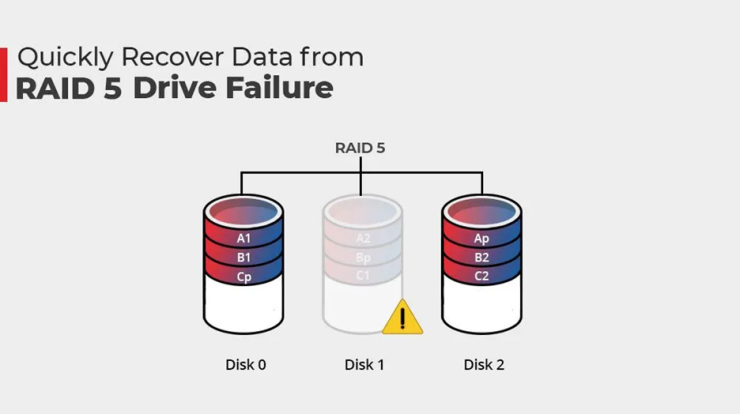
In a time of rapid technological advances, worldwide connection, and ever-changing economic landscapes, enterprises encounter many obstacles necessitating flexible approaches. An important component is operational resilience, a company’s capacity to endure setbacks and bounce back.
Operating resilience becomes crucial as businesses navigate difficult times like supply chain interruptions, natural disasters, and cyber threats. One significant option is operational resilience software, which gives businesses the means to strengthen their operational bases and proactively manage risks.
This article explores the ten compelling reasons why investing in operational resilience software is a strategic imperative for modern enterprises.
1. Holistic Risk Management
Operational resilience software provides a thorough method of risk management. Conventional risk management schemes frequently concentrate on particular elements, resulting in deficiencies in overall readiness.
On the other hand, operational resilience software combines risk assessment, mitigation, and reaction into a single structure. Organizations can identify possible vulnerabilities across several operational layers, including supply chains and IT infrastructure, by using this comprehensive methodology.
Businesses can create proactive measures to reduce vulnerabilities and improve their overall resilience by gaining a comprehensive understanding of hazards.
2. Regulatory Compliance
The criteria for compliance tighten as regulatory environments change. Operational resilience is becoming increasingly important to governments and industry associations in order to safeguard customers and maintain the stability of the financial markets.
Purchasing operational resilience software gives businesses the ability to monitor, report on, and adjust to compliance needs, allowing them to remain ahead of regulatory changes. This improves the organization’s reputation for dependability and adherence to industry standards, and legal concerns are reduced.
3. Cybersecurity Preparedness
Businesses now prioritize cybersecurity due to the increase in the frequency and sophistication of cyber threats in recent years. Operational resilience software is essential for cybersecurity readiness because it provides threat detection, incident response, and real-time monitoring.
It helps businesses to find weak points in their IT system, safeguard confidential information, and react quickly to online catastrophes. In a time when data breaches can have serious repercussions, businesses can preserve operational continuity and protect their reputation by strengthening their cybersecurity defenses.
4. Supply Chain Resilience
Thanks to globalization, Businesses are more interconnected than ever, yet supply chains have weaknesses. The entire supply chain may be impacted by disruptions brought on by pandemics, natural catastrophes, or geopolitical crises.
Tools for mapping and evaluating supply chain dependencies, spotting possible hazards, and creating backup plans are all available with operational resilience software. By taking a proactive position, companies may prevent delays, keep the flow of goods and services uninterrupted, and quickly adjust to unforeseen circumstances.
5. Business Continuity Planning
Robust business continuity planning is made easier with operational resilience software, which guarantees that businesses can carry out their vital tasks even in the event of disruptions. Impact analysis, automated response workflows, and scenario testing are some of these solutions’ functions.
Through scenario modeling, companies can find gaps in their business continuity strategies and make necessary improvements. By minimizing downtime and improving the organization’s ability to recover quickly, this proactive strategy lessens the negative effects of interruptions on the organization’s finances and reputation.
6. Operational Visibility and Control
A thorough awareness of an organization’s internal procedures and external dependencies is necessary to achieve operational resilience. Enhanced insight into daily operations is made possible by operational resilience software, which helps companies recognize dependencies, inefficiencies, and possible threats.
With this knowledge, businesses may put policies in place to streamline workflows, get rid of obstacles, and improve overall productivity. In addition, the software gives companies more operational control, enabling them to make wise decisions and quickly adjust to changing conditions.
7. Crisis Management and Communication
Effective communication is essential in times of crisis. Software for operational resilience has tools for communication and crisis management, which makes it easier to coordinate response activities. Organizations are able to react to crises quickly and decisively because of automated communication channels, pre-established response protocols, and real-time collaboration technologies.
Businesses can lessen the effects of interruptions and preserve stakeholder confidence by making sure the appropriate information reaches the right people at the right time.
8. Efficient Resource Allocation
Through the identification of crucial areas requiring extra funding or attention, operational resilience software assists businesses in allocating resources as efficiently as possible. Businesses can more effectively manage resources, prioritize risk mitigation methods, and guarantee that the most crucial components of their operations are sufficiently safeguarded by using data-driven insights.
This improves organizational efficiency overall and reduces costs, in addition to strengthening resilience.
9. Scalability and Flexibility
Businesses today operate in dynamic contexts that are always changing. Software for operational resilience is made adaptable and scalable so that it may change with an organization’s demands.
The program can be modified to support changes brought about by a company entering new markets, growing its operations, or integrating new technology. As the firm expands and changes, its scalability guarantees that operational resilience measures stay applicable and efficient.
10. Enhanced Stakeholder Confidence
Stakeholder confidence and an organization’s reputation are directly related to operational resilience. Companies that exhibit resilience and a proactive approach to risk management are more likely to win over the trust of their partners, investors, and clients.
Resilience in operations Software is a clear demonstration of a company’s dedication to operational stability, and the transparency it offers can help to foster and sustain stakeholder confidence.
Investing in operational resilience software is a strategic need for organizations looking to strengthen their foundations in an era characterized by unpredictability and fast change.
Businesses may overcome disruptions with resilience and agility by adopting a holistic approach to risk management, ensuring regulatory compliance, and proactively addressing cybersecurity and supply chain risks.
Operational resilience software helps to create and preserve stakeholder confidence in addition to facilitating effective resource allocation, improving operational visibility, and streamlining crisis management.
Adopting operational resilience software is becoming more and more of a proactive and forward-thinking approach for companies that are dedicated to long-term success as the business landscape changes.



